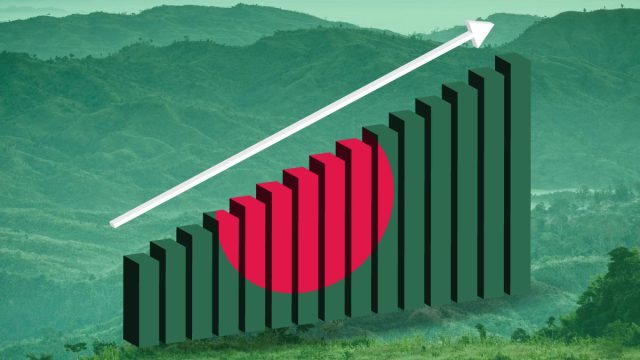In response to the stubbornly high inflation and a lack of savers’ appetite, banks in Bangladesh have taken measures to gradually raise interest rates on deposits. This move aims to attract more depositors and improve liquidity in the banking system.
According to data from Bangladesh Bank, the weighted average rate on deposits offered by banks reached 4.41 percent in May, marking the highest rate in a year. Just a month earlier, the average interest rate stood at 4.38 percent.
The increase in public sector borrowing and demand for loans from the private sector has led banks to acquire deposits at a higher cost due to liquidity stress. This situation arises from the government’s heightened borrowing to finance its expenditure.
Mr. Mohammad Ali, the Managing Director of Pubali Bank Ltd., noted that the overall interest rate on deposits is expected to rise further given the persistent higher inflation. Bangladesh’s average inflation reached a 12-year high of 9.02 per cent in the last fiscal year of 2022-2023, compared to 6.15 per cent a year ago, according to the Bangladesh Bureau of Statistics.
The rise in inflation has resulted in negative real returns on deposits for savers in Bangladesh for over a year. The average interest rate on loans and treasury bills and bonds also experienced an upward trend in June.
Commenting on the current scenario, Mr. Syed Mahbubur Rahman, the Managing Director of Mutual Trust Bank Ltd., pointed out the liquidity tightness in the banking sector. Many banks are offering higher rates to attract deposits and maintain their businesses.
The Bangladesh Bank has extended liquidity through the repurchase rate and the assured liquidity support. However, the requirement for funds persists, partly due to the rising volume of forced loans.
Despite efforts to raise lending rates using the reference lending rate (SMART), borrowers have been resistant to any upward revision. As a result, the deposit rate is increasing at a faster pace than the lending rate, leading to pressure on banks’ net interest margins (NIM).
Professor Shah Md Ahsan Habib, from the Bangladesh Institute of Bank Management, highlighted the pressure faced by depositors due to the interest rate cap imposed by the central bank in April 2020. However, the removal of the ceiling on interest rates is expected to positively impact market fairness.
As banks navigate these challenges, they continue to assess and reprice interest rates on deposits to meet the demands of the changing economic landscape.

















